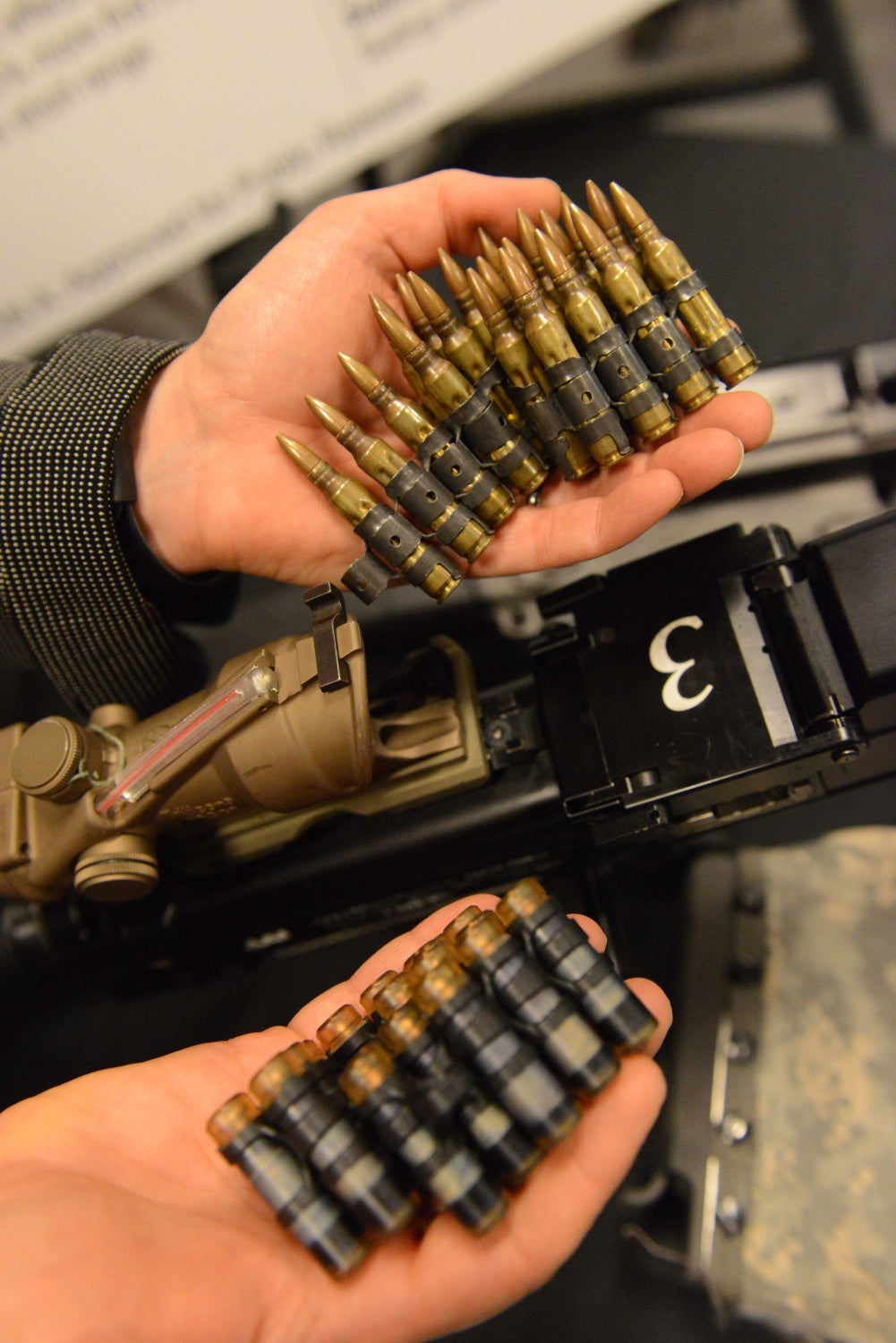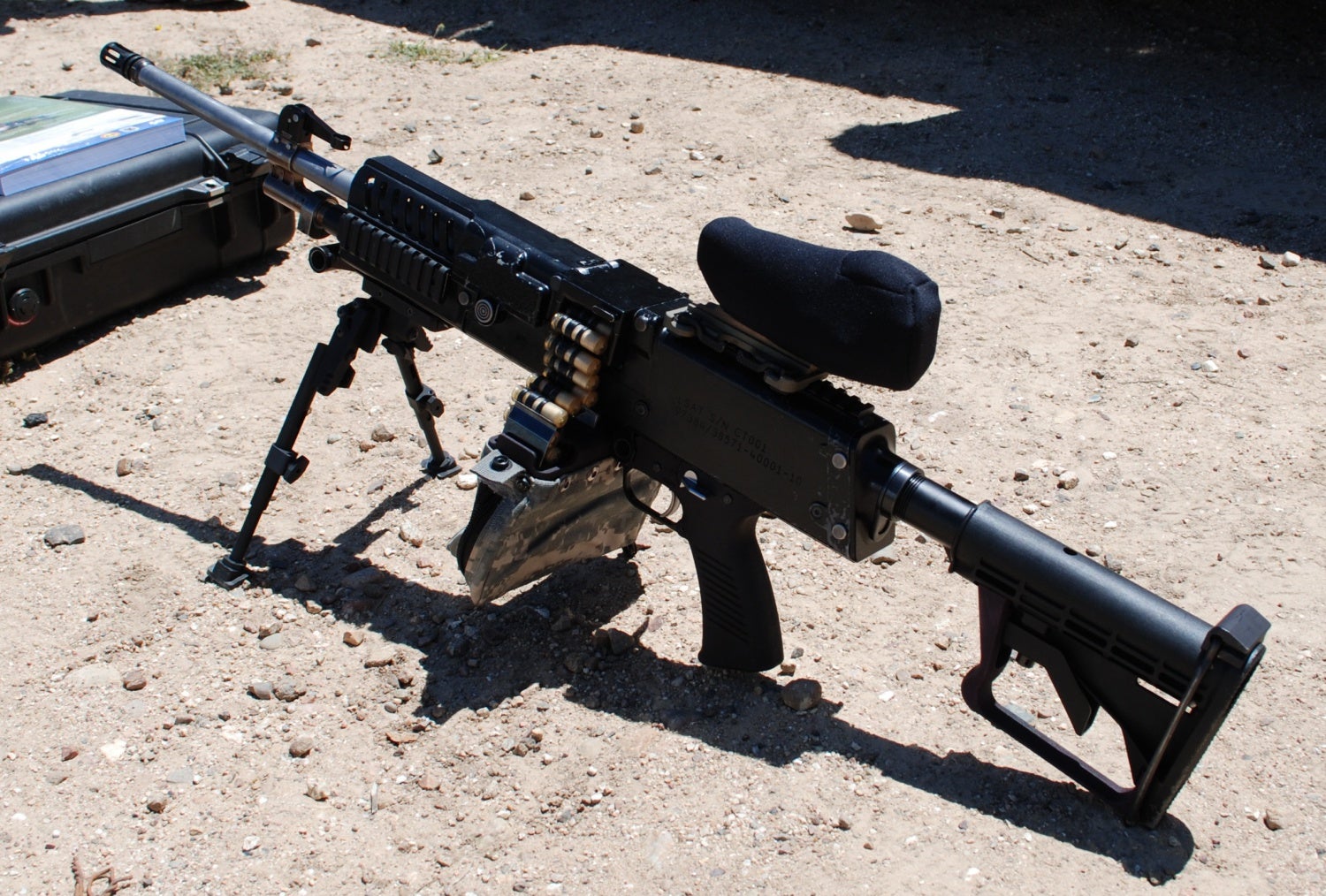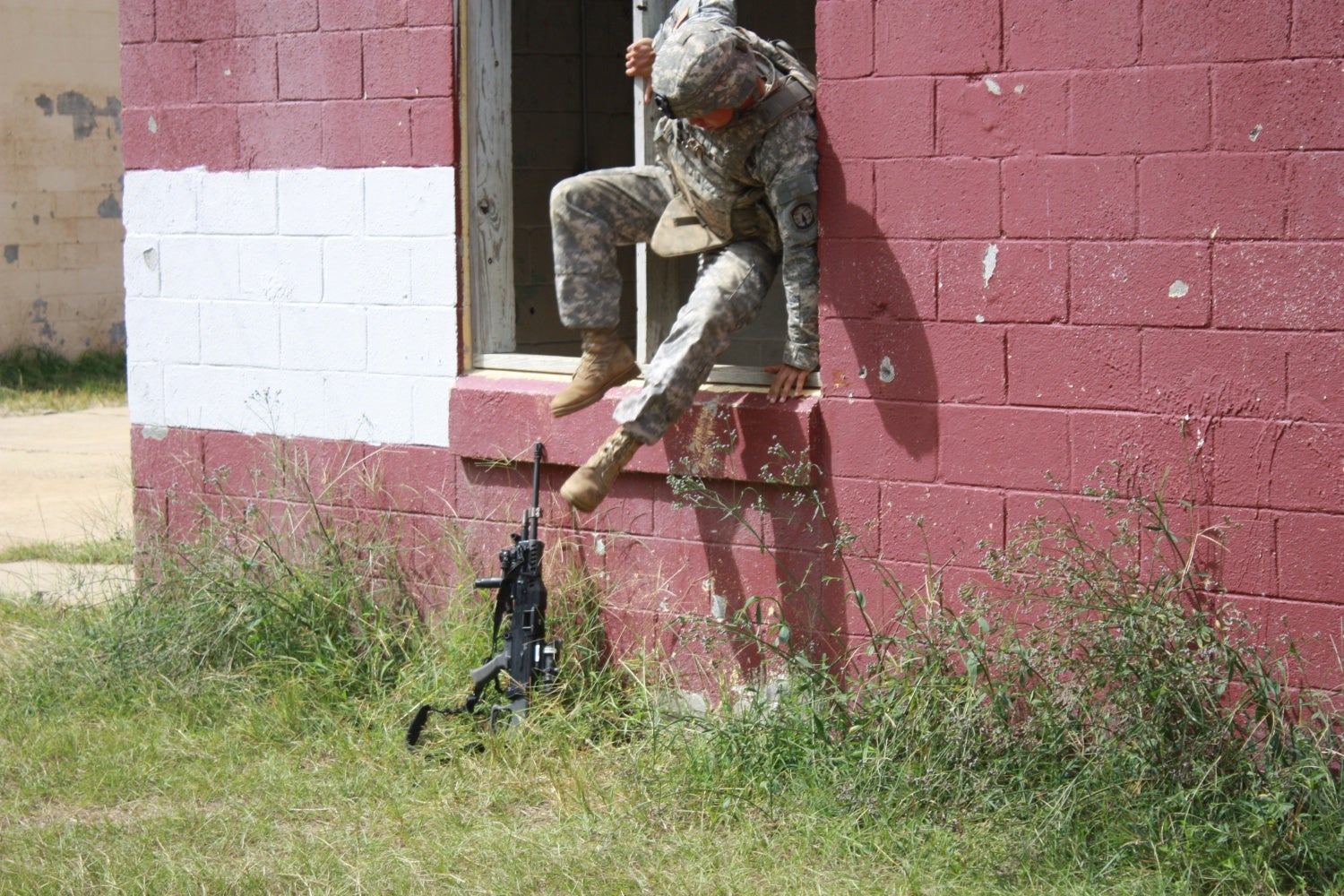INTERVIEW with Kori Phillips, Program Officer for LSAT and CTSAS, Part 2: Ammunition Technical Discussion, Cont’d
Not long after SHOT Show, I got the chance to interview Mrs. Kori Phillips, former program officer for the Army’s Lightweight Small Arms Technologies (LSAT) program, and current program officer for the Cased Telescoped Small Arms Systems (CTSAS) program. We talked at length about both programs, the technology they developed, and the state of lightweight ammunition today. The interview, which spans fifty-five questions, will be broken up into three sections, each covering questions about different aspects of the program, to be published monthly once each in March, April, and May-wait, hold on,
Our Dear Leader Steve has approved a weekly timeline for the interview, instead of a monthly one. That means we’ll be finishing up by the end of March! Hooray!
This second installment covers in greater depth the ammunition technology developed in these programs. Before we begin, I would like to take a moment to thank Kori and Frank for taking the time to speak with me. They were very patient with me and did not hesitate to answer any of my questions.
Now, we’ve got a lot to get through! My questions are labeled with a bold “TFB“, while Kori’s answers are labeled with a bold “KP“:
TFB: What technical challenges were there in developing the plastic-cased telescoped (CT) ammunition? Was selecting the kind of polymer used a challenge? How did the technology from the caseless program affect the CT program?
KP:Probably one of the most difficult items early on was to find a polymer to use for the ammunition that could withstand the temperature range that was required, along with the extreme environment of the ballistic cycle. The team researched dozens of polymers, and ended up testing 10 or so. Of those, only one met all the requirements of the system (unfortunately, I can’t name it here, but it is a very high quality medical-grade polymer). I don’t think CT really benefitted from caseless, but certainly the caseless benefitted from CT! They use basically the same weapon, with a only a few changes to accommodate the burning of the caseless cartridge, so only one weapon needed to be developed.
TFB: The CT cartridge demands a firearm mechanism with a movable chamber, for single-direction feeding and extraction. This chamber dictates different design elements than standard reciprocating-action weapons that feed and extract in two different directions. How does this change affect the design of new weapons, and has it improved or degraded the new weapons’ characteristics relative to conventional firearms in any way?
KP: The decision was made to use CT because it is fully supported in the chamber, and the polymer would not be prone to failure at the back end of the case like the legacy designs. The weapon design then followed the CT ammo design, and proved to be a much simpler weapon. Feed and “extraction” all move in the same direction, so there is no issue with timing or jamming during that part of the cycle. Also, since the chamber is not attached to the barrel, it never gets hot enough to cause cook off of the ammunition, which is a safety concern for legacy design weapons. The CT weapons are also more accurate and have reduced felt recoil, according to data from user testing.

TFB: Other caseless and cased telescoped programs – like the Air Force’s 25mm GAU-7 that was originally intended for the F-15 – have had problems with barrel wear, specifically in the throat area. Can you tell me whether LSAT ever had those issues, and if so how they were corrected?
KP: One of the problems with some of these previous programs was that they promised other things in addition to lighter ammunition – more range, more power, etc. In the case of the 25 and 30mm telescoped ammunition, they were using a lot of propellant and very high chamber pressures, which really exacerbated issues with wear. This was one of the reasons we only promised lighter ammunition in the beginning. We wanted to work on the technology itself.
TFB: Later rounds appear to have no propellant in the case beyond the projectile’s cannelure. Was this done to solve the barrel wear issue, or for another reason?
KP: There was never any propellant in the case beyond the cannelure in any of the CT iterations.
TFB: Initial LSAT rounds appear to use loose propellant, but consolidated propellants were tried in the caseless program. Do the final LSAT/CTSAS rounds use consolidated propellants or did loose propellant give better results?
KP: The final LSAT CT ammo has compacted propellant. It is not consolidated (i.e. no binders are added to the propellant). The compacted propellant has better burn characteristics than loose propellant, and it also saves case volume, allowing overall smaller cartridge size.
TFB: How did the LSAT/CTSAS team solve the issue of consistently inserting the projectile into the throat of the barrel? Did this solution cause any problems? How did the team make CT rounds that have consistent bullet seating during manufacturing without a traditional case neck?
KP: The front end cap of the cartridge guides the bullet into the throat of the barrel. It does so very consistently, and the rounds have excellent accuracy and dispersion. The bullets are attached directly to the end cap during the assembly process and remain that way until the propellant has built up sufficient gas pressure to shoot the bullet.
TFB: LSAT has taken CT from TRL 4 or 5 to TRL 7 over the course of a decade. What was that process like, and how did your overall view of lightweight ammunition change?
KP: The important part of maturing a technology or a system is to know what the technical milestones are for each TRL. They need to be established before the development is started. Once those were established, we moved through the TRLs fairly smoothly. The more difficult part was not progressing through the TRLs, but trying to make incremental improvements along the way to the weapon design and the ammunition design.
TFB: There are many different lightweight ammunition concepts out there, but LSAT seemed to be centered around only two (CT and caseless). Did LSAT examine other concepts like aluminum cased or sheet metal cased rounds, and if so what did their evaluations conclude?
KP: While we were evaluating the dozens of polymer materials, we also did an evaluation of metallic cases. Aluminum was out from the start, because it is an accelerant (if it is exposed to burning propellant, it will ignite). Steel did not provide the necessary weight reductions. Based on the design of the cartridge and the weapon chamber, polymer case or caseless were the best options.
TFB: The different priorities of the CT configuration seem to me to be a real benefit to improving the design of the belt-fed weapon in particular. Did you find this to be the case, and did that help you reduce the weight of the weapon system?
KP: The benefit really came with reducing complexity. The cartridge overall length is shorter, which really helps reduce the size of the mechanism. The other thing is that we designed the LMG from scratch using Finite Element Analysis, which most weapons designers have not had available to them before the 2000s. So each gun designed in the ’90s or before was heavier than it needed to be because they didn’t have the benefit of computer analysis telling them exactly how heavy each part needs to be to do what it needs to do. We know by using FEA what each part needs to be made of and how heavy it needs to be, and not a gram more. The weapon is as weight efficient as any weapon is going to be; you can make it thicker or sturdier, you can add material to it for drop testing and field testing and that kind of stuff. As far as the function of the weapon goes, it’s bare-bones, as light as it can possibly be.

TFB: You sound confident that FEA has given you a mechanism that is exactly as big as it needs to be and not any bigger.
KP: Right. We definitely proved that with the models; in the beginning we had an issue where the old gun guys didn’t believe what the model was telling them. So we went to the range to test it, and they went “wow, the model was right!”
TFB: The new CT belt links are, like CT cases, made of polymer. How did these belt links hold up during testing, and was there any problem selecting the right kind of polymer for the job?
KP: Through all of our testing on 5.56mm and 7.62mm, the links have been shown to be quite robust. They also were subjected to the same environmental testing that the ammunition was subjected to, with no issues. The stresses on the links are far less than on the cartridge case, so the selection of polymer for the links was much simpler. The key is that they are circumferential, not open, like current metal links. They work perfectly with cylindrical (CT) cases, but would not work with legacy ammunition due to the way the links are stripped.
TFB: In a previous question, you’d said it was really accurate, too. That surprised me. Could you elaborate?
KP: It is. We were very surprised to find out that the propellant burns more consistently in the compressed configuration than it does in the loose configuration. The engineers at St. Mark’s Powder, they were just as surprised as we were. They went back and they did an analysis, they did a paper on the efficiencies of compacted propellant in a cased telescoped configuration. The accuracy comes from the consistent pressure/time curves that are generated, and also the sleeve that we have inside the endcap. The ammunition is two pieces, it’s got a case and an endcap. The endcap is a heavier, more solid piece, and it has a sleeve that the bullet rides through, which is slightly undersized. It’s a resistance fit which aligns the bullet into the barrel. What we don’t know is why it’s better than brass ammo. It’s not tremendously better than brass cased ammo, but it is better. One of our theories is that when you feed a brass-cased round into a weapon, you’re putting mechanical strain on that bullet as it gets pushed into the rifling. So the bullet may be pushed into a certain orientation, sometimes slightly off-axis to the rifling. Our system may self correct for that, allowing the bullet to center more perfectly every time. We were concerned about the gap between the bullet and the rifling, everyone told us that would be a problem. It turned out to be the opposite.
TFB: You obviously have to have a separate chamber and a separate barrel unit. One thing that might be a negative is that on a revolver you have a gap there, where gas can escape. Do you have that problem, or have you found a solution to that?
KP: For case telescoped, the front of the cartridge actually seals the breech, and the plastic flows into the empty space. It’s sort of a balancing act to let the cartridge expand and flow, but not so much that you can’t get the case out of there. It obturates the chamber just like it would with a brass case.

TFB: Sort of an off-the-wall question. It occurs to me that you have this squat little cartridge case with an endcap and a certain set of dimensions. Have you guys ever tried combining that with a sabot?
KP: I can say that we have not, although they did try that in ACR. For me personally, I steer clear of sabots in small caliber rounds because they have a tendency to out-weigh the projectile, which is problematic. I don’t see any real reason not to, frankly.
One of the things that makes CT so attractive to other people in the small arms world is that it’s so easily configurable to other projectiles, so yeah, if you decided to go back to flechettes or whatever, you could do something like that. This would be a much better way to package them.
TFB: In 2015, Textron was showing off their 6.5mm CT carbine. It seems like there are a lot of hurdles in designing a rifle with a moving chamber like that, can you elaborate more on that?
KP: We started with a bunch of different concepts for the carbine’s chamber mechanism, like rotating, translating, revolving, and eventually we settled on a rising chamber design. It turned out to be the simplest of all of them. This was our second effort at a carbine, actually. The first one, which you’ve seen, was a 5.56mm CT with a rising chamber, too. The problem with that one was, if you wanted to take the magazine out of your gun and unload your weapon, all the sudden we couldn’t do that. The way the mechanism was set up, you couldn’t remove the magazine until the gun was empty, things like that. That was around the time that program (LSAT) was wrapping up, so we took that carbine and put it on the shelf, and in this new contract that got awarded two years ago. We pulled it off the shelf, looked at some different mechanisms, and ended up back at a rising chamber, but with a different layout. So now, operationally there’s no more issues with taking the magazine out, it works pretty normally. There are still some complications. From a personal standpoint, I fought long and hard to make it a belt-fed carbine, the links weigh practically nothing, and it helps simplify things, but the users were dead set against that.
TFB: That’s interesting, because I’ve talked with some other folks in the field about this subject, and they agreed that what they really should do is just issue everyone belt feds, for CT specifically. I guess that resistance comes from legacy belt-fed systems, which are frankly a giant pain in the butt. It seems like the CT MG wouldn’t be as much of a problem, is that right?
KP: No, it’s not. It’s always a problem when you’re introducing something new, it’s hard to get rid of the baggage from the previous systems. So maybe when someone comes along who’s maybe not as tied to that baggage, they will say “you know, maybe we could do a belt-fed rifle, there’s no reason that we had to have magazines.”
TFB: It doesn’t seem like it would be that hard to design a system where you just had a belt in a pouch that you just straight inserted into the gun, like a magazine.
KP: We’ve actually talked about it. We built a little prototype where you just shoved this little device into the belt feeder, you didn’t have to open it or anything. Once it went “click”, then you were ready to go, just like a magazine, but it was inserted on the right side, instead of at the bottom. The resistance to this idea of using belt feds seems to be based around the idea that you can change a magazine in 1 second, and it takes me 20 seconds to change a belt on a legacy belt fed. Of course, we can give them a 200 round belt, so…
But even if we end up adopting a belt-fed rifle, the work we’re doing on the magazine-fed carbine is still useful. I think it helps us understand what the benefits of designing things a certain way are, and you can always apply that information back into the next iteration.
TFB: The compacted propellant, is that basically just SMP-842 that has been compressed, or something?
KP: Yes, it’s a variant of ball powder. They had to tweak the blend to get the right pressure curve for CT, so it’s not an off-the-shelf propellant, but it is similar. St. Mark’s will not tell us what the difference is, that’s their proprietary info. The powder is literally pressed into the case, without any kind of binder or glue. There’s nothing sticking the balls together. The compression takes out the air gap, so you end up with like 1.1 grams/cc density, so a bit over 100% loading density.
The third installment of this interview will be published in May next weekend! Stay tuned!

